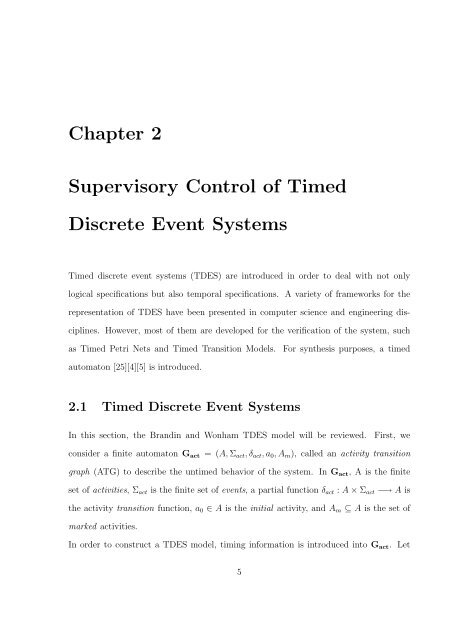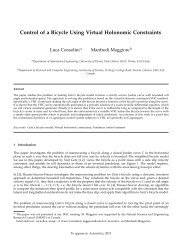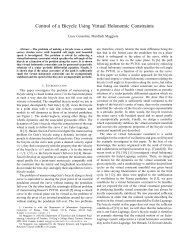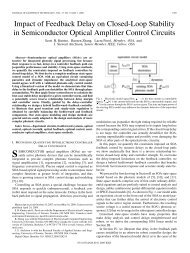State Based Control of Timed Discrete Event Systems using Binary ...
State Based Control of Timed Discrete Event Systems using Binary ...
State Based Control of Timed Discrete Event Systems using Binary ...
You also want an ePaper? Increase the reach of your titles
YUMPU automatically turns print PDFs into web optimized ePapers that Google loves.
Chapter 2Supervisory <strong>Control</strong> <strong>of</strong> <strong>Timed</strong><strong>Discrete</strong> <strong>Event</strong> <strong>Systems</strong><strong>Timed</strong> discrete event systems (TDES) are introduced in order to deal with not onlylogical specifications but also temporal specifications. A variety <strong>of</strong> frameworks for therepresentation <strong>of</strong> TDES have been presented in computer science and engineering disciplines.However, most <strong>of</strong> them are developed for the verification <strong>of</strong> the system, suchas <strong>Timed</strong> Petri Nets and <strong>Timed</strong> Transition Models.For synthesis purposes, a timedautomaton [25][4][5] is introduced.2.1 <strong>Timed</strong> <strong>Discrete</strong> <strong>Event</strong> <strong>Systems</strong>In this section, the Brandin and Wonham TDES model will be reviewed.First, weconsider a finite automaton G act= (A, Σ act , δ act , a 0 , A m ), called an activity transitiongraph (ATG) to describe the untimed behavior <strong>of</strong> the system. In G act , A is the finiteset <strong>of</strong> activities, Σ act is the finite set <strong>of</strong> events, a partial function δ act : A × Σ act −→ A isthe activity transition function, a 0 ∈ A is the initial activity, and A m ⊆ A is the set <strong>of</strong>marked activities.In order to construct a TDES model, timing information is introduced into G act . Let5







